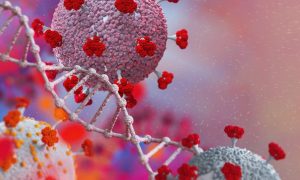The Tomb of the Shroud is a first century tomb at the foot of Mount Zion in Akeldama, Jerusalem. This tomb is one of more than 70 tombs in an area known as the “Field of Blood”, but this tomb is unique, as a fragment of degraded shroud textile and a clump of human hair were discovered among the skeletal remains. High levels of humidity in Jerusalem usually prevent the preservation of any organic material.
In the first century, Jewish people generally buried the dead in a primary burial site, known as a loculus, until the organic parts decomposed. Approximately a year later, the bones would be reburied in a pit, niche or stone ossuary. The remains discovered in the Tomb of the Shroud were all found in these secondary burial niches, except for one skeleton (referred to as SC1). The degraded textile and hair remains were discovered with skeleton SC1 in a primary loculus.
Prior to the archaeological investigation of the Tomb of the Shroud, the tomb had been looted and only minimal remains were discovered for each skeleton. This prevented any traditional morphological analyses but molecular analyses were successful.
Why were two sections of the tomb sealed off?
The loculus of skeleton SC1 and another niche containing two infant skeletons were sealed off with a white plaster. This was an uncommon burial practice for Jewish people from the first century. The investigators hypothesized that these individuals had succumbed to an infectious disease, so their remains were sealed off to stop the spread of disease. Often morphological analyses can identify pathological bone changes, such as from Mycobacterium tuberculosis and Mycobacterium leprae (the causative agents of tuberculosis and leprosy). However, the damage to the remains inhibited this typical analysis.
Instead, the scientists used genetic analyses to screen for the presence of DNA from these two bacteria from bone, textile and environmental samples from throughout the tomb. Mycobacterium tuberculosis DNA was detected from all three skeletons in the two sealed sections (SC1 and the two infants) but not elsewhere in the tomb. Mycobacterium leprae DNA was also detected from skeleton SC1. Tuberculosis and leprosy infections were generally fatal during the first century and were associated with an enormous social stigma. The detection of disease pathogens in just these two sections may explain why these sections were sealed off from other parts of the tomb.
Were the skeletons biologically related?
The mitochondrial DNA (mtDNA) profile for each skeleton was determined, as the high copy number (hundreds of copies per cell), rapid evolution rate and strict maternal inheritance of mtDNA make this DNA type the most suitable and informative for the analysis of ancient human remains. There are three regions of the mtDNA that can be analyzed – two hypervariable regions (HVR1 and HVR2) and the coding region.
Partial sequences from both hypervariable regions were obtained from the remains, but consistent results were only obtained for the HVR1 region. This mtDNA analysis identified seven different mtDNA types across the eleven individuals, indicating maternal relationships between several of the skeletal remains.
Conclusions
Genetic analyses conducted in the Tomb of the Shroud may have explained one of the reasons why sections of ancient tombs are sealed off – an attempt to prevent the spread of infectious and often fatal diseases such as tuberculosis and leprosy. It is also possible that the fear of both diseases, may explain why skeleton SC1 was never moved from the primary loculus to a secondary location.
These analyses also identified maternal relationships between several of the skeletons from the Tomb of the Shroud. However, although mtDNA has numerous advantages over nuclear DNA for the analysis of ancient remains, it also has a distinct disadvantage, as only maternal relationships can be determined by this technique. Some of the skeletons showed no maternal relationship to other skeletons, but it is possible that there are paternal relationships linking these remains.

DNA Database Comparisons
The DNA tests conducted in this study have identified seven different mtDNA types from the Jewish population during the first century in Jerusalem. If you have taken the mtDNA HVR1 (Standard Maternal Ancestry) test, you can compare your mtDNA against these seven types to see if you share a similar mtDNA profile.
DNA Ancestry Project Features
Ancestry Test
Mitochondrial DNA sequencing
Y-DNA STR fragment analysis
Autosomal STR fragment analysis
Advanced ethnic origins report
Recent ancestry analysis
Ancient ancestry analysis
DNA Ancestry Projects
Relationship match
Relationship confirmation









